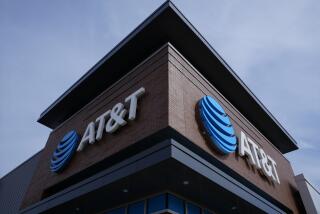Understanding Cell Phone ‘Dead Spots’
- Share via
Question: My cellular provider is Verizon and I use a Nokia phone that’s about 2 years old. When I drive through certain areas around Los Angeles, I suddenly lose the signal. Why does this happen? Is there a difference between providers? Is digital better than analog?
Answer: When your cell phone loses its signal, it means your phone is unable to communicate with any nearby antennas. Most often, it means you have hit a “gap” in your carrier’s coverage, although sometimes it means that the nearest antenna is too crowded with other users to handle your call.
Carriers try to design their networks so there are no “dead spots” between antennas, but coverage gaps are nonetheless commonplace.
A good way to find the best network for your needs is to ask neighbors, work colleagues and others who have a cell phone and who have similar traffic patterns.
That brings us to the digital-versus-analog question. To get the best mix of coverage, it’s best to buy a dual-mode phone, which works on both digital and analog networks.
Analog cellular networks transmit conversations through the air in continuous, fluctuating electrical signals. Because analog has been around for many years, there generally are more cell sites that work with analog signals.
A few years ago, companies started building digital networks, which convert conversations into a stream of 1s and 0s. With digital signals, conversations are clearer and more resistant to eavesdropping.
A dual-mode phone will always look for your carrier’s closest digital antenna, but if a digital antenna can’t be found, the phone will automatically switch to an analog antenna.
*
Elizabeth Douglass covers telecommunications. Submit questions to Tech Q&A; at techtimes@latimes.com. Please be specific about your computer and operating system and include a daytime phone number.




